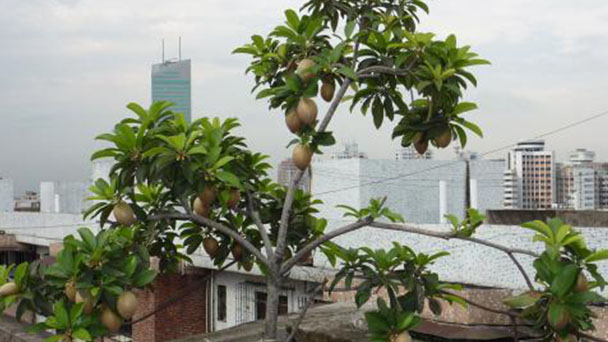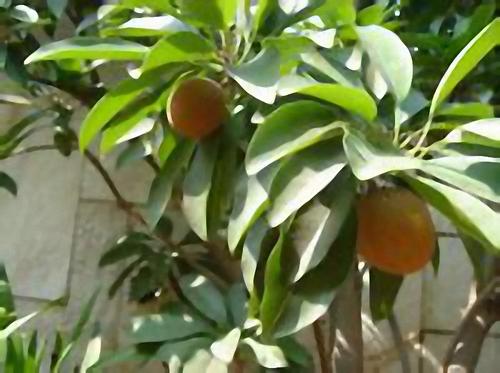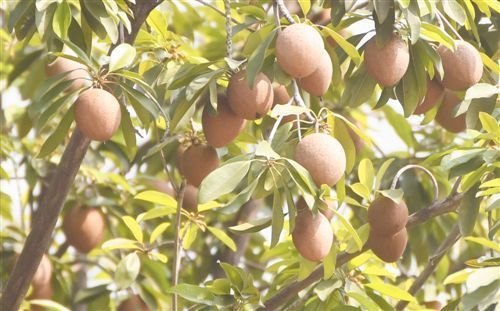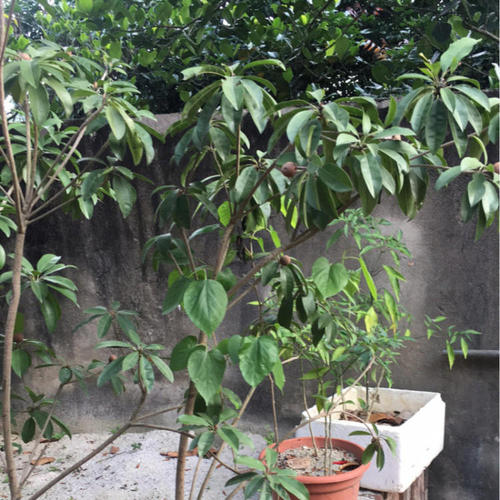Sapodilla profile
Written by Maggie
Dec 24 2020

Sapodilla is a tropical fruit cultivated in tropical countries. Introduced from Java in the ninth year of the Republic of China, it was planted in Chiayi. Now in Chiayi, Tainan, Yunlin and other places are cultivated.
Sapodilla picture

Morphological characteristics of Sapodilla
Sapodilla is 15-20 m tall (cultivators are often shorter, and often shrubby), branchlets brown, with visible leaf scars. Leaves are alternate, densely clustered at branchlets, leathery, oblong or ovoid elliptic, apex acute or obtuse, base cuneate, entire or sparsely wavy, glabrous on both surfaces, mid veins concave above, very convex below, lateral veins slender, many and parallel, reticulate veins extremely fine, inconspicuous on both surfaces. Flowers are 1-2 in axils of apical branches, densely covered with russet or rust-colored tomentose; The calyx is outer annulus 3-lobed ovate, inner annulus 3-lobed ovate, slightly shorter, densely yellow-brown tomentose outside, inner surface only tomentose along the margin; Sapodilla corolla is white, corolla lobes ovate, apex with irregular fine teeth, two large petal-like appendages on both sides of back, capable of bearing stamens attached to larynx of coronal tube, filamentous, ca. 1 mm long, base thickened, anthers long ovate; Staminodes are petal-like, ovary conical, densely yellow-brown tomentose; The style is cylindric, base slightly bold. The berry is fusiform, ovate or globular, 4 cm or more long, brown, pulp yellowish brown; Seeds are flat. Flowering period: April-September.
Sapodilla growth habit
Sapodilla likes high temperature and fertile sandy loam, strong adaptability. The tree can still safely winter at -2 ~ -3℃, and the low fertility of the clay soil can also grow and develop normally.
Sapodilla can normally blossom and bear fruit at 11~31℃. Young fruits are vulnerable to freezing damage at -1 ℃, big trees are vulnerable to freezing damage at -4.5 ℃, and cold damage at -2.2 ℃. For economic cultivation, Sapodilla should be developed in areas with high temperature. Sapodilla requires adequate water, annual rainfall of more than 1300mm, good growth, deep roots, drought resistance, greater resistance to sterility and salt, tall trees, large leaves, brittle branches, and easy to fold.
Sapodilla distribution area
Sapodilla is grown commercially in Yucatan, Mexico, Central America, tropical America, Southeast Asian countries and India. It has been introduced to Florida, Caribbean, India, Philippines, Malaysia, Vietnam and other countries. Sapodilla cultivated in China was introduced from Singapore, Indonesia and other countries in the early 20th century. Sapodilla is mainly distributed in the southern and central parts of Yunnan, Guangdong, Guangxi, Fujian, Hainan and Taiwan provinces (regions).

The propagation method of Sapodilla
When the fruit ripens from September to October, Sapodilla shall remove the pulp and take out the seeds, which shall be left for sowing in the spring of the following year. Mat appropriate is in spring air temperature rises to 20℃ above when undertake, in 1 ~ 2 years born branch presses 3 ~ 4 centimeters of width annulus is stripped, use the compost soil that straw retting makes to bind next, often keep soil-mass moist, about 2 months can form new root. Adequate basal fertilizer should be applied during colonization. Care must be taken to prevent scale insects. Fruit may be produced 4 ~ 5 years after planting.
The main use of Sapodilla
1. Ornamental function: Sapodilla tree is evergreen and graceful in all seasons. It is often used as a street tree, afforestation and ornamental tree.
2. Edible value: Sapodilla is rich in nutrients and has the effect of clearing the heart and moistening the lungs. Its seeds, bark and roots can be used as medicine, making it a tree with high economic value. Sapodilla is mainly used for fresh food. It can also be processed into jam, juice, dried slices and fruit crystals, etc. Sapodilla has the effect of clearing the heart and moistening lungs.
3. Medicinal value: Seeds, leaves and bark can be used as medicine.

Latest Updated
- Benefits of Bugleweed - 7 Science-backed Health Benefits
- Bugleweed Dangers & Side Effects - Is It Poisonous?
- How to Plant Evergreen Trees - What You Should Know
- When to Plant Evergreens - Grow Guide for Evergreen Trees
- 12 Wonderful Evergreen Shrubs for Your Garden
- 12 Popular Evergreen Plants with Pictures for Beginners
- When And How To Prune A Lilac Bush Like a Pro
- How to Grow & Care for Lilac Vine (Hardenbergia Violacea)
- Japanese Lilac Tree (Syringa Reticulata) Care & Propagation Guide
- Shumard Oak Pros and Cons - What to Know
Popular Articles
- Winter maintenance of Antirrhinum Majus
- How to Grow Terminalia Mantaly Tree
- How to Grow and Care for Crossostephium Chinense
- How to grow Antirrhinum Majus in spring
- Peristeria Elata (Dove Orchid) Profile: Info & Care Guide
- Underwatered Snake Plant (Sansevieria Trifasciata) - Signs And How To Fix
- How to Care for Brazilian Jasmine Plant (Mandevilla Sanderi)
- How to Grow & Care for Graptopetalum Purple Delight in Summer
- Rosa Chinensis (China Rose): Plant Growing & Care Tips
- How to Care for Baby Sun Rose (Aptenia Cordifolia)